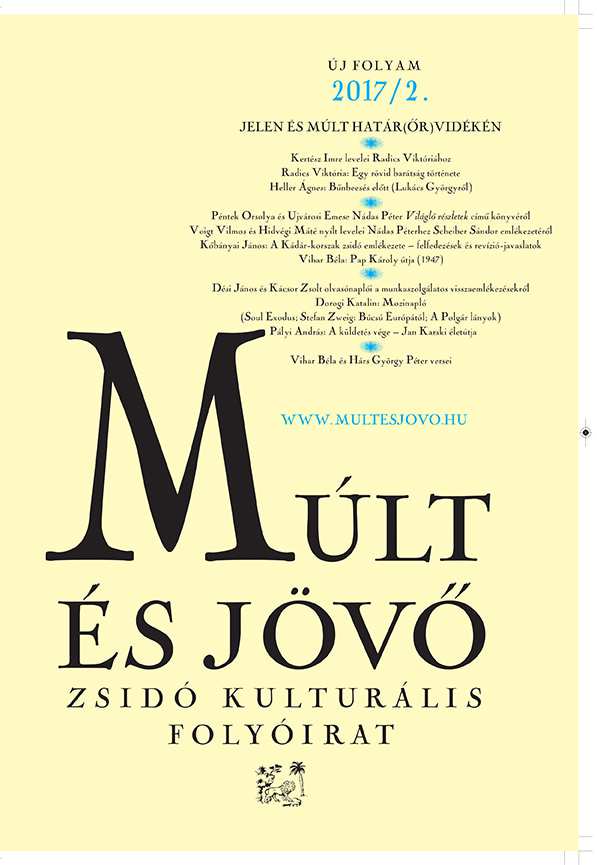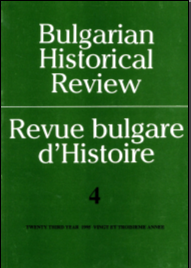
Transitions Online_Around the Bloc-Russia Riled By Polish Decision to Destroy Red Army Monuments
Adding insult to injury, the Sejm voted for the bill on a day Russia commemorates those who lost their lives in the fight against Nazism.
More...We kindly inform you that, as long as the subject affiliation of our 300.000+ articles is in progress, you might get unsufficient or no results on your third level or second level search. In this case, please broaden your search criteria.

Adding insult to injury, the Sejm voted for the bill on a day Russia commemorates those who lost their lives in the fight against Nazism.
More...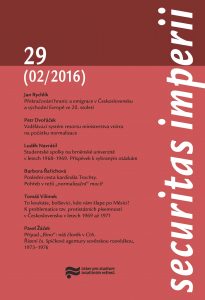
Review of: Wachsmann Nikolaus "KL. Geschichte der nationalsozialistischen Konzentrationslager" Siedler Publishing House, Munich 2016, 992 pages by: Bertrand Perz
More...
Poland, Bosnia have done almost nothing to abide by pledges to speed up restitution, European Shoah Legacy Institute study finds.
More...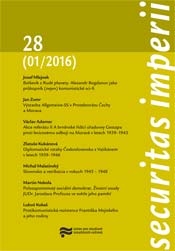
The study discusses building of Allgemeine SS in the Protectorate of Bohemia and Moravia, commenced by the SS command almost immediately after the occupation of Bohemia and Moravia. The entire occupied territory was divided among the top sections of the SS bordering on the Protectorate, which sent their recruiters to the Czech lands. These were men with long Nazi past who had experience with illegal activities for the SS and the NSDAP in both Czechoslovakia and Austria and who could rely on capable organizers. The introduction of the chiefs of individual recruitment sections is followed by an analysis of the recruitment itself, which did not go without problems, probably due to conflicts with the SA concerning potential recruits: it was temporarily suspended and was not re-started until mid-April 1939. The activities of the recruitment committees were completed a month later and, in late June 1939, the form of Allgemeine SS in the Protectorate was approved, including the separate SS-Abschnitt XXXIX with two regiments, 107th SS‑Standarte, based in Jihlava, and Prague’s 108th SS-Standarte. Due to the absence of major German language islands in Bohemia and the associated lack of suitable candidates for service in the SS, the 107th SS-Standarte only had two instead of the standard three battalions. At the end of the study, the author analyses the composition of the officer corps of the Protectorate SS. Although a considerable part consisted of local or, more precisely, Sudeten Germans, the majority of leadership positions were assumed by Germans from the Reich. Building of Allgemeine SS in the Protectorate of Bohemia and Moravia was formally ended in January 1940, at the military ceremony at the Old Town Square in Prague. Fresh information relating to movements of their own, Vlasov army or German units was drawn on special operational maps and recorded in war diaries. To a limited degree it was also intended to provide information to the “Alex” senior HQ or in some cases the Czech National Council or even the rebel radio. The final three edited documents from 11 May 1945 contain an evaluation for Soviet military agencies of the participation of Vlasov army units in the battle for Prague.
More...
JUDr. Jaroslav Profous was an important member of the Czechoslovak Social Democratic Party. In the period from 1933 to 1938, his service for the Republic led him to the District Financial Directorate in Cheb, where he witnessed the onset of Henlein supporters and escalation of nationalist sentiments. He tried to alleviate them by organizing joint meetings and demonstrations with the Sudeten German socialists, but the fight for the continuation of the democratic multi-ethnic Czechoslovakia was impossible to win. Profous left Cheb and found a job at the Financial Directorate in Hradec Králové, where, after the occupation of the rest of Czechoslovakia, he joined the anti-German resistance in March 1939, as one of the leaders of the “We Shall Remain Faithful” Petition Committee (Petiční výbor “Věrni zůstaneme”) organization for the entire East Bohemia. He was arrested for his resistance activities and spent nearly five years in German prisons. After the war, he served as General Secretary of the National Renewal Fund – Resettlement Office, responsible for managing the property of Germans, traitors and collaborators, seized on the basis of presidential decrees. As a supporter of the right wing within Social Democracy, he was not happy to see the onset of the Communist power. After 1948, he was removed from his offices and, subsequently, decided to go abroad. He gained extensive experience within the exile community in Austria, Switzerland and Belgium, and then he moved to the United States of America. From the wide range of Profous’s activities, we should mention his work in the Free International Federation of Deportees and Resistance Internees (FILDIR) and the Czech National Building in New York. If it wasn’t for the recently discovered unique source, i.e. his personal memories intended for his family, most parts of the remarkable chapters of Jaroslav Profous’s life would probably remain unknown to the professional public.
More...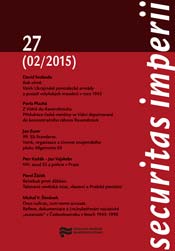
More than 40 women born on Czechoslovak territory were deported from the territory of Austria to the Ravensbrück concentration in the course of WWII. They were a decidedly heterogeneous group in terms of nationality and ethnicity (including Czechs, Germans, Jews and Romanies). Likewise the Nazis’ reasons for persecuting them had various motivations (racial, ideological, ethnic, religious). In addition, assessing the women’s relationship to their native country is today very difficult. In exploring the historically established Czech resistance in Austria it is necessary to focus on Vienna and its Czech minority, which over 3% of Vienna’s citizens identified themselves as belonging to in 1939. Soon after the war broke out the Nazis proceeded to gradually eliminate Czech community life in Vienna. The resistance of the city’s Czechs was thus driven not only by ideology but also by nationality. Around 10 female members of what was referred to as the Czech section of the Communist Party of Austria were deported to Ravensbrück for their resistance activities. Its women members were predominantly recruited from a Czech sports association. Ideologically they were close to the Social Democratic Party and once the Nazi persecution began Vienna’s Czech minority began carrying out illegal activities in conjunction with the Communist Party. Their classification as “political” prisoners helped them to a certain degree to survive the cruel conditions of the concentration camp, as did their experience from the resistance, organisational ability, political views and language skills. Thanks to their cultural and ideological closeness they frequently established contact with Czech female prisoners, ties that endured after the war when the women were involved in the creation of Austria’s Ravensbrück Camp Society.
More...
The study analyses the creation, organisation and activities of the 99th SS-Standarte, one of 126 regiments of the Allgemeine-SS established on the territory of Southern Moravia and the north-eastern part of Lower Austria following the occupation of the borderlands. A general introduction to the Allgemeine-SS is followed by an outline of the incorporation of those parts of Southern Moravia into Lower Austria and a brief characterisation of the SS in Austria. The author analyses the composition of the 99th SS-Standarte, the location of individual units and the command structure, introducing the most important officers. He also describes service in the Allgemeine-SS and the Znojmo regiment, which predominantly involved doing sports, ideological training and participation in Nazi celebrations. With the outbreak of war most members of the 99th SS-Standarte were transferred to the Wehrmacht and armed SS units. The remaining men had two main tasks: the recruitment of young men to the Waffen-SS and looking after conscripts’ families. The study concludes with an exploration of Czechoslovak (and Austrian) judiciary’s post-war efforts to punish members of the Znojmo Allgemeine-SS regiment.
More...
The 8th SS and police court in Prague (SS- u. Polizeigericht VIII, Prag) became part of the independent SS and police court system in 1940. Its powers included judging crimes committed by officers of the Waffen-SS, the security (Sipo) and regular (Orpo) police, the security services (SD) and eventually a whole range of auxiliary police units (Luftschutzpolizei, Feuerschutzpolizei, Technische Nothilfe etc.) on the territory of the Protectorate of Bohemia and Moravia. At the close of WWII up to 280,000 people were subject to it. At least four senior judges, resp. court chiefs, headed the court and many Czech Germans who had built up their careers during the First Republic passed through it. The court dealt with a broad range of crimes – from desertion to property, disciplinary and sexual offences to traffic violations – and subsequently handed down punishments such as jail terms, the loss of civil liberties and even the death penalty. The number of sentences imposed undermines the established thesis of the SS being an elite force, with many repeat offenders being found in its ranks. However, the court played only a marginal role in the persecution of Czechs, at least in comparison with other elements of the Nazi judiciary.
More...
For several decades after the end of WWII, the crimes committed against the lives and health of patients within the framework of Nazi “euthanasia” were of marginal interest. In socialist Czechoslovakia – incidentally as in the former GDR, for instance – crimes against groups marginalised for health reasons garnered little or even no attention; their victims were expelled from the collective memory. Documentation was closely linked to the official investigations carried out by the State Security (StB), which in the case of Czechoslovakia could have been submitted either in the immediate post-war period or in the 1960s. In terms of methodology, it was in the main subordinate to police practice and characterised by both a deficit of historical analysis and a lack of basic orientation in the subject. In view of the complicated nature of the issue it is therefore unsurprising that the conclusions – which essentially from the very beginning had no ambition to analyse Bohemian and Moravian materials in the broader context in which Nazi “euthanasia” was carried out – were in the end markedly superficial and contradictory and in all of the cases examined simply trailed off. However, there was merit in the fact that they managed to gather and record at least some testimonies and data that may today prove useful in historical research.
More...
This paper is part of the thesis that the radio as a medium was used for certain periods of time and is now used as a propaganda tool. Period analysed is the Second World War, and the goal is to show how the warring parties used radio for propaganda purposes. Through scientific methods of description, the historical and comparative method, we will try to show how the Axis powers and the Allies used this medium as an effective propaganda tool. The special attention is placed on the phenomenon of radio propaganda that characterized this war, including not only official, but also secret and fake radio stations that were ran by the famous propagandist Josef Goebbels, one side, and Sefton Delmer, on the other. From today’s perspective and from the time distance, results suggest that radio, the only electronic mass media of that time, was considered very important. Radio was used to inform, to raise morale, to spread defeatism, disinformation and propaganda. Radio stations were driven on all continents, the programs were in many languages , and radio waves reach was beyond the state borders. Because of all this we can conclude that the main propagandists from both sides have recognized the importance of this medium and fully used its capacities.
More...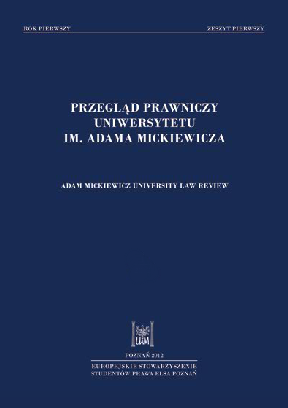
The paper aims to comment on the judgment of the International Court of Justice of 2nd February 2012 in the case of Jurisdictional Immunities of the State between Germany and Italy from the perspective of the problem of jurisdictional immunity. In its decision concerning compensation for atrocities suffered by Italian citizens during World War II granted by Italian courts against the German State as well as the execution of the analogical decisions of Greek courts, the International Court of Justice upheld the immunity of the German State. The compensation sought by the plaintiffs in the national proceedings was to redress massacres on the civil population, deportations and forced labor. In its decision the Court analyzed the exception proposed by Italy in three strands which, according to the Respondent, cumulatively would result in an exception to the rule of state immunity. Firstly, the acts giving rise to the Italian claims constituted grave violations of humanitarian law; secondly, the rules of law violated constitute peremptory norms of international law; thirdly, no other form of redress was available rendering the exercise of jurisdiction by the Italian court to be a measure of a last resort for the victims.
More...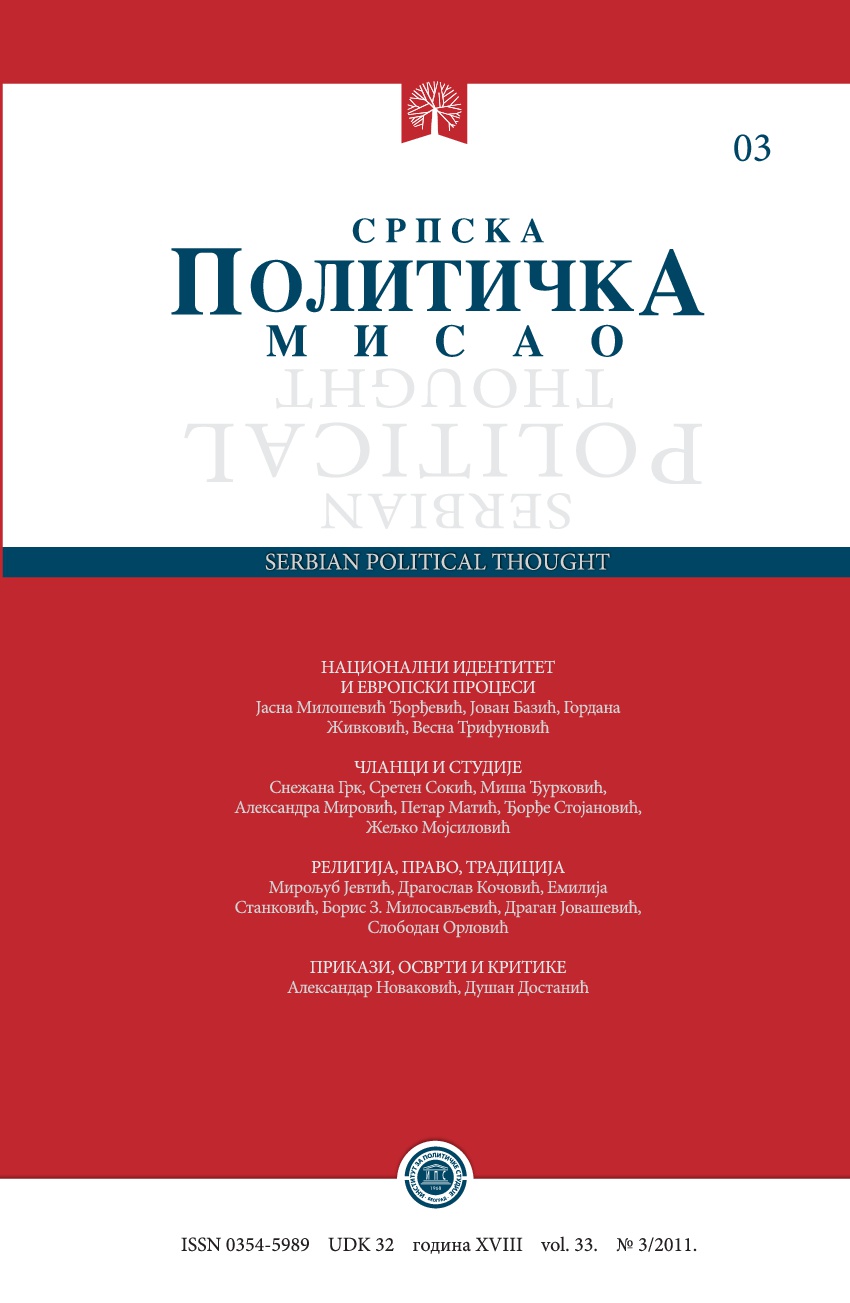
Author starts from the fact that in Serbian language we still do not possess basic academic article intended to present phenomenon of conservative revolution in Weimar Germany. Hence he tries to expose one work of that kind with proper ideas, subjects and works. He also clarifies political, social and international context in which this tradition was created and developed and then special attention is brought to controversial relation of these thinkers with Nazism. The article is especially focused on Ernst Jünger as key figure for connecting different streams within conservative revolution and finally his Der Arbiter (Worker) is being presented as some kind of synthesis of intellectual trends operating within this “movement”.
More...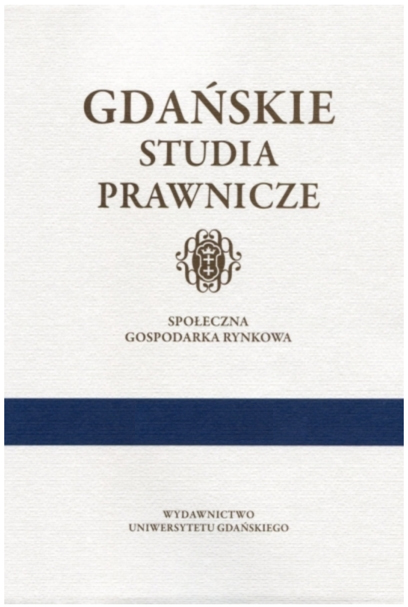
The internal development of western occupational zones was conditioned by the political objectives of individual countries, so it proceeded in a differentiated manner demonstrating specific features in each zone. One of the common features of this development was the establishment by all powers, although at different times, the states (lands) as the country’s new territorial units. The new division in most cases did not coincide with the borders of the already existing German states. As well as the earlier division into zones,also this time the decision was taken in an arbitrary manner. It was dependent primarily on the interests of the Allies. In western zones, the formation of states was completed in 1947, the earliest in the American zone, as already in 1945. In all three western zones twelve states were established, four states in each zone, including two city-states Bremen and Hamburg.The division into states established by the Allies has generally remained until today,with the exception of Baden-Württemberg, which was created in 1951 by the merger of the three states of the south-western Germany: Baden-Württemberg (American zone), Württemberg-Hohenzollern and South Baden (French zone). In all these states democratic elections were carried out, both at the municipal and the national level. In all states national constitutions were adopted, which were subsequently approved by referendum.
More...
The article is devoted to the analysis of the law of Nazi Germany, which was made by the prominent representatives of the Polish legal science of the inter-war period who generally very critically evaluated constitutional solutions implemented in Nazi Germany. Particular attention is drawn to the harsh criticism of Hitler’s racial concept and legal structures derived from it. In the analysis of the political system of Nazi Germany Polish lawyers devoted a lot of space to a specific conception of the state as a racial community consisting of all Germans, not just those who were the residents of German Reich. For the evaluation of the structure of the Nazi German political system, following issues are of particular importance: the role of the Nazi party, which was the only political party legally functioning then and the political position of the leader who was a sovereign standing above the law.
More...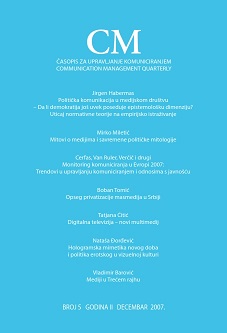
In our study we present fundamental elements and facts which had influenced the development of media in totalitarian state as was the national socialist Germany. We analyse the most important Nazi newspapers “Volkischer Beobachter“, its articles and other media after Hitler established the government. Except German newspapers “Volkischer Beobachter“ and “Signal“, we also analyse domestic interwar newspapers in Serbian language, such as „Dan“. We present state of affairs in film production and status of radio in totalitarian system of the Third Reich. In the study we also mention firs steps of German television with special attention on Josef Goebbels’ role. We tried to mark most important limitation of media freedom and to signify flagrant assaults on freedom of journalism.
More...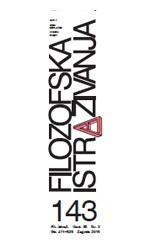
This text deals with aesthetic aspects of right totalitarian ideologies, or more precisely, the function that kitsch as pseudoart has in their origin and maintenance. As affinity towards kitsch, which was established by art theoreticians a long time ago, is a characteristic of a complex structure of human experience and view of the world, the author also explores the ways in which it was exploited or manipulated in other, strictly speaking non-aesthetic spheres of life in Germany and Italy of the 1930s. Political symbolism, language of politics, offered forms of political identification and mobilization towards the projected political goal are the subject of her analysis in the central part of the text, which analysis is derived from that angle of research. The author concludes that the alliance between kitsch and totalitarian political regimes is not accidental, but that it is, on the contrary, founded on common and firm anthropological bases.
More...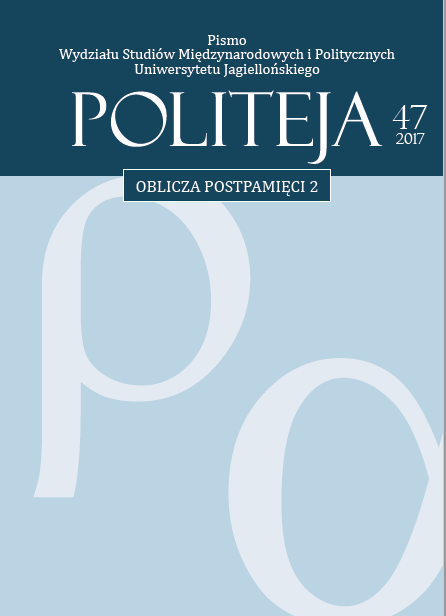
This article presents the general problem of the postmemorial character of parts of contemporary historiography. An illustration of this issue is the preliminary analysis of descriptions of Polish‑Ukrainian relations during World War II. The analysis is based on tropes derived from genocide studies. Several research hypotheses were formulated on this basis. They require further verification. This is, among others, the question of introducing the concept of ‘social postmemory’ and showing its relation to historical policy. Promising seems to the perception of the connection between post‑memory, discursiveness, and eristic. The issue of intergenerational dialogue on the past and memory has also emerged in the background of deliberations. In the article, an ethno‑historical variant of practicing history has also been criticized in an indirect way.
More...
The plans of the Third Reich to conquer the “living space” in the East of Europe and the great dependence of the German war economy on imports of oil and oil products, after the introduction of the naval blockade, turned it to the only available source of these strategic raw materials, which were located in Southeast Europe. The Romanian oil, new sites in Hungary and other neighbouring countries, the acquisition of the ownership and control over the oil companies which, before the war, belonged to the Western countries and the United States, the imposition of an exclusive right for taking huge quantities of oil for the German war needs, the organization of transport, sabotage prevention, and repairs of refineries after Allied bombing are some of the issues discussed in the text. Attention is also given to the role of Hermann Neubacher, the German special commissioner for the economy.
More...